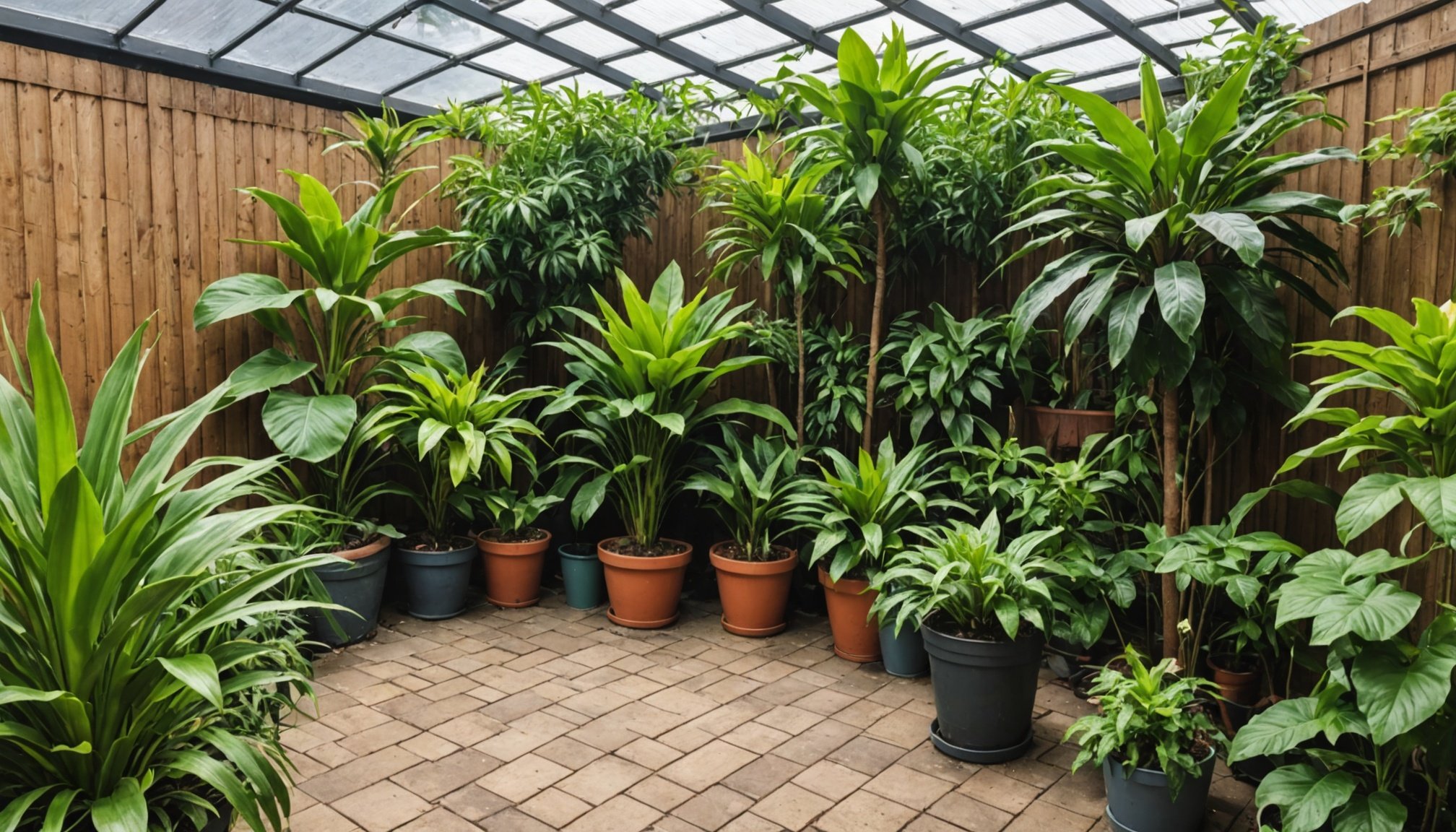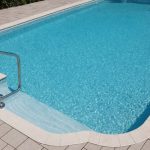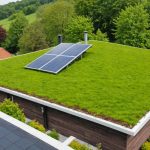Creating a thriving tropical plant garden in the UK can be a challenge, especially when it comes to maintaining the right temperature. A heat retention system offers a practical solution to protect your plants from the unpredictable British climate. This guide walks you through selecting and installing the ideal system, ensuring your tropical garden flourishes year-round. Discover tips and techniques that will not only preserve warmth but also enhance the beauty of your garden. Prepare to transform your gardening experience and keep your plants thriving, regardless of the weather!
Overview of Heat Retention Systems
Heat retention systems are essential for maintaining optimal temperatures for tropical plants, especially in the cooler UK climate. These systems work by trapping and storing warmth, ensuring that plants receive the necessary heat to thrive even when outdoor temperatures drop.
Sujet a lire : Thriving Mediterranean Herb Gardens: A Guide to Cultivating Aromatic Plants in the UK”s Mild Climate
In the UK, where the climate can be unpredictable, tropical plants often struggle without additional warmth. Heat retention systems provide a controlled environment that mimics the natural conditions these plants are accustomed to, promoting healthy growth and reducing stress.
There are several types of heat retention systems available, each with unique benefits:
A découvrir également : Selecting the Perfect Shade Trees for Your Cozy UK Urban Garden: A Comprehensive Guide
- Greenhouses: Enclosed structures that capture solar heat and prevent it from escaping, creating a warm and humid environment.
- Cold frames: Smaller, portable versions of greenhouses that are ideal for individual plants or small groups.
- Thermal blankets: Lightweight covers that insulate plants by trapping heat close to the soil.
Choosing the right system depends on the specific needs of your tropical plants and the space available in your garden. Understanding these systems' functions and benefits can help UK gardeners make informed decisions, ensuring their tropical plants remain healthy and vibrant throughout the year.
Step-by-Step Installation Guide
Installing heat retention systems can significantly benefit tropical plants in the UK climate. This guide will provide a detailed, step-by-step approach to ensure successful installation.
Preparation and Planning
Before beginning the installation, assess your garden's layout and identify the optimal location for your system. Consider factors like sunlight exposure and wind protection. Proper planning will ensure your system operates efficiently.
Tools and Materials Required
Gathering the right tools and materials is essential. You'll need:
- A measuring tape
- A level
- Screws or fasteners
- Insulation materials
- A framework kit (for greenhouses or cold frames)
Having these on hand will streamline the installation process.
Installation Process
Choosing the right location is crucial. Select a spot with ample sunlight and minimal wind exposure. This will maximize heat retention.
Setting up the framework involves assembling the structure according to the manufacturer's instructions. Ensure it is level and securely anchored.
Implementing insulation techniques includes using thermal blankets or additional insulation layers. This step prevents heat loss and maintains a stable environment for your plants.
By following these steps, you can create an effective heat retention system that supports the growth of your tropical plants year-round.
Choosing the Right Materials
Selecting the appropriate materials for heat retention is crucial to ensure the effectiveness and safety of your system. The right materials not only enhance the system's ability to trap warmth but also ensure the well-being of your tropical plants.
Types of Materials Suitable for Heat Retention Systems
Insulation materials such as bubble wrap, horticultural fleece, and polystyrene are commonly used for their excellent heat retention properties. These materials help maintain a consistent temperature, reducing the risk of cold damage to plants.
Considerations for Plant Safety and Environmental Impact
When choosing materials, consider their impact on plant health and the environment. Opt for plant-safe options like biodegradable insulation, which minimizes harm to the ecosystem. Avoid materials that may release harmful chemicals when exposed to heat.
Cost-Effectiveness and Availability of Materials
Cost and availability are also important factors. While some insulation materials may be more expensive, their durability and efficiency can justify the investment. Local garden centers or online retailers often stock a variety of options, making it easier to find materials that suit your budget and needs. Choosing wisely will ensure your heat retention system is both effective and sustainable.
Cost Considerations
When considering the cost of heat retention systems, it's essential to balance the initial investment with long-term savings. The budgeting for installation includes expenses for materials like insulation, frameworks for greenhouses or cold frames, and any additional tools required. In the UK, these costs can vary based on the size and complexity of the system you choose.
Breakdown of Potential Costs
The UK gardening costs for heat retention systems can range from affordable DIY solutions to more elaborate setups. For instance, simple insulation materials like bubble wrap or horticultural fleece are cost-effective, while greenhouse frameworks may require a more significant investment. Installation costs can also vary; doing it yourself can save money, but professional help might be necessary for larger projects.
Long-Term Savings vs. Initial Investment
While the initial costs might seem high, investing in a quality heat retention system can lead to significant long-term savings. These systems reduce the need for additional heating, lowering energy bills and ensuring your tropical plants thrive year-round.
Financial Assistance or Grants
In the UK, there may be financial assistance or grants available for sustainable gardening practices. Exploring these options can help offset some of the initial costs, making your investment more manageable.
Maintenance of Heat Retention Systems
Regular maintenance of heat retention systems is vital for their optimal performance and longevity. Routine checks and upkeep tasks ensure that these systems continue to provide the necessary warmth for tropical plants. Start by inspecting the structural integrity of greenhouses or cold frames. Look for any damage or wear in the framework and repair as needed.
Seasonal considerations play a crucial role in the upkeep. During colder months, ensure that insulation materials are intact and effectively trapping heat. In warmer months, consider adjusting ventilation to prevent overheating. This seasonal adjustment helps maintain a stable environment for your plants year-round.
Troubleshooting common issues is another aspect of maintenance. If you notice temperature fluctuations, check for gaps or leaks in the insulation. Ensure that all fasteners and seals are secure. If condensation becomes a problem, improve airflow by adjusting vents or adding fans.
By following these maintenance tasks, you can extend the lifespan of your heat retention system and ensure it continues to support your tropical plants effectively. Regular upkeep not only enhances performance but also prevents potential issues that could compromise plant health.
Plant Care Strategies
Caring for tropical plants in the UK requires understanding the unique needs of these species and how heat retention systems can support their growth. These systems create an environment that closely mimics the warm, humid climates tropical plants thrive in, offering significant heat retention benefits.
Best Practices for Caring for Tropical Plants
To maximize plant health, monitor temperature and humidity levels within your heat retention system. Regularly check for signs of stress, such as wilting or discoloured leaves, which can indicate improper conditions. Ensure that the soil remains moist but not waterlogged, as tropical plants often require consistent moisture.
Impact of Heat Retention on Plant Growth
Heat retention systems enhance plant growth by maintaining stable temperatures, which encourages photosynthesis and nutrient uptake. This stability reduces stress and promotes healthier, more robust plants. By simulating their natural environment, these systems help tropical plants to flourish even in cooler climates.
Adapting Care Strategies Seasonally
Adjust your care strategies with seasonal changes. In colder months, ensure insulation is effective and reduce watering to prevent root rot. During warmer periods, increase ventilation and monitor for overheating. By adapting to seasonal variations, you can maintain optimal conditions and ensure the continued health of your tropical plants.
Local Regulations and Climate Factors
Understanding UK gardening regulations is crucial when installing heat retention systems. Legal requirements may include planning permissions, especially for larger structures like greenhouses. It's essential to check with local councils to ensure compliance and avoid potential fines or removal orders. Regulations can vary, so consulting with local authorities will provide clarity on what is permissible in your area.
The UK climate significantly influences the effectiveness of heat retention systems. The unpredictable weather patterns, including sudden cold snaps and high humidity, can challenge maintaining optimal conditions for tropical plants. By considering these climate factors, gardeners can better plan and adjust their systems to ensure maximum heat retention and plant protection.
Local resources are available to assist with compliance and support. Many councils offer guidance on UK gardening regulations, and community gardening groups can be a valuable source of shared experiences and advice. Additionally, online forums and governmental websites provide information on climate considerations and legal requirements, helping gardeners make informed decisions. Engaging with these resources can facilitate a smoother installation process and enhance the effectiveness of your heat retention system.
Visual Aids and Resources
Understanding the installation of heat retention systems can be greatly enhanced by using visual aids. These tools provide a clearer picture of the process, helping to avoid common mistakes and ensuring a smoother installation experience. Diagrams and instructional videos are particularly valuable, offering step-by-step guidance that can be revisited as needed.
Recommended Resources
For those new to gardening or unfamiliar with heat retention systems, instructional videos are an excellent starting point. These videos often demonstrate techniques in real-time, making complex steps more accessible. Diagrams, on the other hand, offer a detailed overview of the system's components and assembly process, which can be particularly useful for visual learners.
Additional Support
Beyond initial installation, ongoing support is crucial for maintaining the effectiveness of your system. Resources for gardeners such as online forums, gardening clubs, and local workshops can provide valuable insights and troubleshooting tips. Engaging with these communities allows for the exchange of experiences and solutions, enhancing your gardening knowledge and ensuring your heat retention systems continue to operate efficiently.











